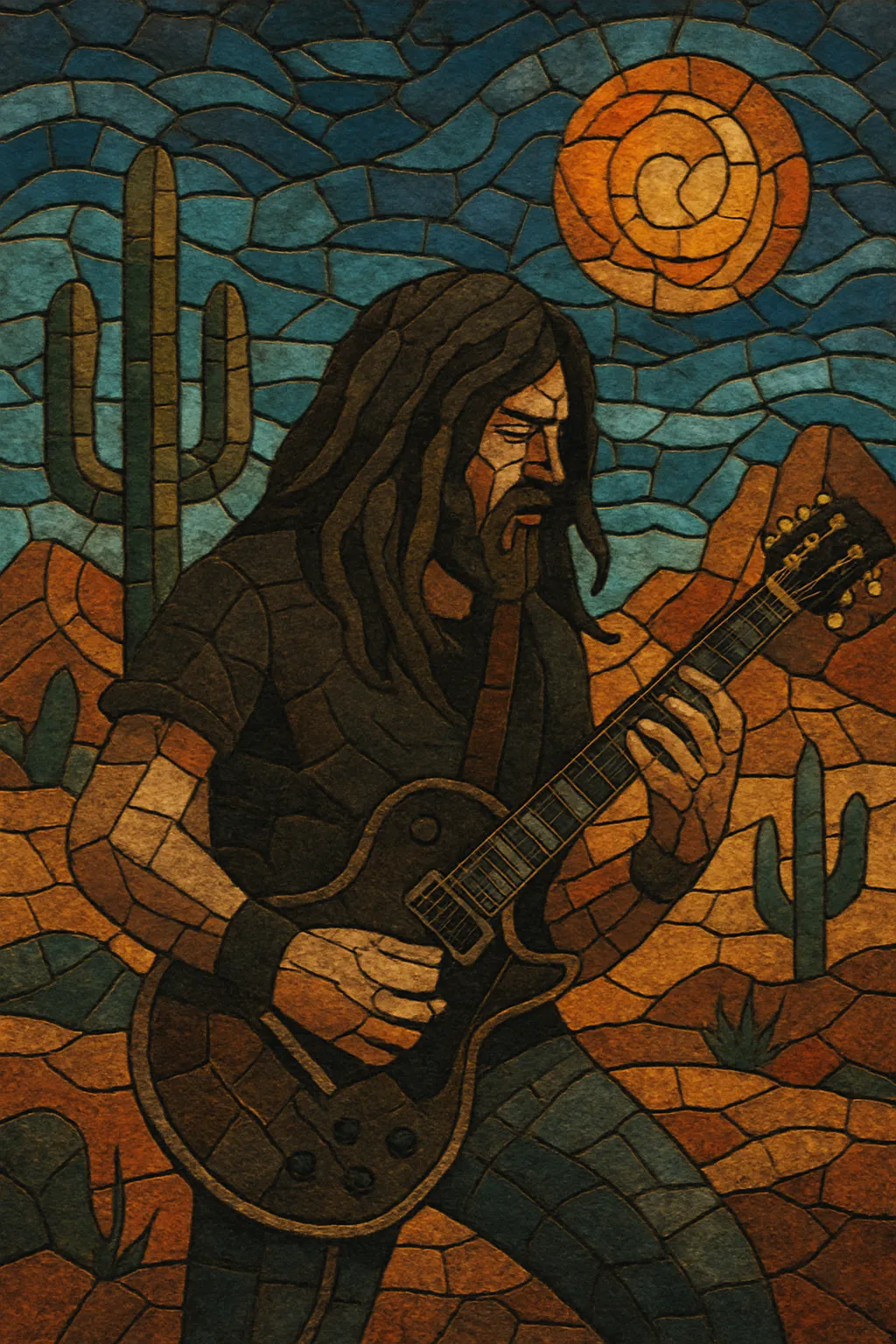
Stoner rock is a heavy, riff‑centric style that blends the weight and doom of early heavy metal with the groove and expansive jams of late‑60s/70s psychedelic and acid rock.
It is marked by fuzz‑drenched, down‑tuned guitars, thick bass tones, and relaxed but powerful mid‑tempo grooves. Songs often emphasize hypnotic, repetitive riffs; extended instrumental passages; and a warm, vintage analog sound. Vocals tend to be laid‑back or gritty rather than operatic, and lyrical themes commonly explore the desert, space, altered states, mythology, and countercultural imagery.
The overall vibe is earthy and immersive—equal parts head‑nodding groove, psychedelic haze, and Sabbath‑born heaviness.
Stoner rock’s DNA traces to the heavy, blues‑derived riffing and occult haze of early heavy metal and hard rock (Black Sabbath, Blue Cheer) and the expansive textures of psychedelic and acid rock (Hendrix, Hawkwind). Through the 1980s, doom metal and sludge‑leaning acts (Saint Vitus, Trouble, The Melvins) preserved the slow tempos, colossal riffs, and gritty tones that would feed directly into stoner aesthetics.
The genre cohered in the early 1990s, centered around Southern California’s Palm Desert “generator parties,” where bands powered outdoor shows with portable generators and embraced a jam‑friendly, sun‑baked heaviness. Seminal releases like Kyuss’s “Blues for the Red Sun” (1992), Sleep’s “Sleep’s Holy Mountain” (1992), and Monster Magnet’s “Spine of God” (1991) defined the thick fuzz, hypnotic riffs, and relaxed propulsion of the style. Independent labels (e.g., Man’s Ruin, Rise Above, later Tee Pee) helped codify a scene and aesthetic—vintage gear, blown‑out fuzz, and long‑form grooves.
As Kyuss disbanded, Queens of the Stone Age carried the sound into broader rock consciousness while maintaining the desert groove ethos. Meanwhile, bands like Fu Manchu, Electric Wizard, Orange Goblin, and Nebula established parallel scenes in the U.S. and Europe. Festivals (Roadburn, DesertFest) and boutique pedal/amp culture reinforced the genre’s warm, analog identity. The heavier edge blurred with doom, birthing and popularizing stoner metal and stoner‑doom variants.
Digital platforms and a robust live circuit spread the style globally, producing notable waves in Scandinavia (Truckfighters, Dozer), Germany (Colour Haze), and beyond. Labels such as Heavy Psych Sounds and Ripple Music nurtured a steady stream of releases. Today, stoner rock remains a vital, international underground with a strong DIY ethos, prized for its immersive riffs, tactile tones, and jam‑friendly structures.

